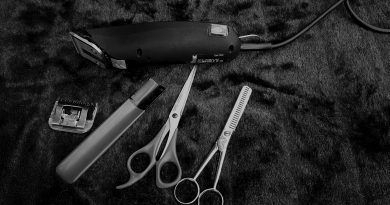Spring Allergies in Dogs
It is springtime in the Northern Hemisphere and the trees, grasses and flowers are emerging from their wintertime slumber. For many people, this means allergy season and a miserable one at that! While you may be suffering from itchy eyes and a runny nose, did you know that your dog can be affected by seasonal allergies as well?
Your dog may be suffering from a seasonal allergy if you see signs such as:
- Runny, itchy eyes
- Scratching at ears
- Chronic ear infections
- Red, inflamed, itchy skin
- Chronic skin infections
- Hair loss
- Excessive licking at the paws
- Anal gland discomfort
Inhalant allergies in dogs are not just limited to spring or fall pollen counts. Dogs who suffer from chronic skin problems may also have non-seasonal allergies to substances such as dust mite dander, molds, air pollutants, cockroaches and food allergies. If your dog only starts having itchy skin once spring arrives, pollens and molds are probably to blame.
A few tips for helping your canine seasonal allergy sufferer:
Veterinary examination
You should have your vet examine your pup at the first sign of scratching. Sometimes other causes may be to blame, as irritating insects like fleas and ticks also emerge in the spring. Your vet can thoroughly check the skin for these pests and other causes of itchy skin, such as yeast or bacterial infections.
Frequent baths
Pollen is not only a problem for allergy sufferers when it is inhaled, it also can be an irritant on the skin. Many dogs with pollen allergy have fewer problems when weekly baths are given. It is best to bathe your dog in a fragrance-free or hypoallergenic conditioning shampoo. Many vets recommend good quality, all-natural oat fiber, soap-free products such as Epi-Soothe shampoo made by Virbac. Be sure to really rub the shampoo into the skin and let it sit for a minute before washing it off with lukewarm water. If your dog has severe skin disease, talk to your vet about which shampoo is best for his or her particular case.
Daily Pollen Removal
It is a good idea to remove pollen from your dog’s fur and skin on a frequent basis in between baths. When your dog goes outside for a restroom break, he or she will get pollen on the paws, in between the toes and on the hair coat. This pollen can be an irritant on the skin of allergic dogs, causing a ‘contact dermatitis.’ Keep a pack of fragrance-free, aloe ‘baby wipes’ by your front door for pollen removal. Use a wipe to clean off the paws, taking care to clean in between the toes. Take a second (or third) wipe and gently brush off your pet’s fur. Many owners report that this technique helps prevent itchy paws during allergy season. Frequent examination of the paws and coat can also alert you sooner to other skin problems developing, such as hot spots.
Other forms of relief
If your dog is an allergy sufferer, it is possible that he or she has more than one allergy. Talk to your veterinarian about allergy testing and methods for preventing allergy symptoms, such as the addition of locally sourced bee pollen or honey into your dog’s diet. This natural approach to ‘immunotherapy’ can yield good results if it is started in the ‘off-season’ when pollens are not in the environment and the dog is not itchy. Other pets have such severe allergies that daily antihistamines and steroid therapy are necessary to help them cope. Only your vet will be able to help you decide what is best but in the meantime, spend as much time outdoors with your dog as you can in this lovely warm weather!














